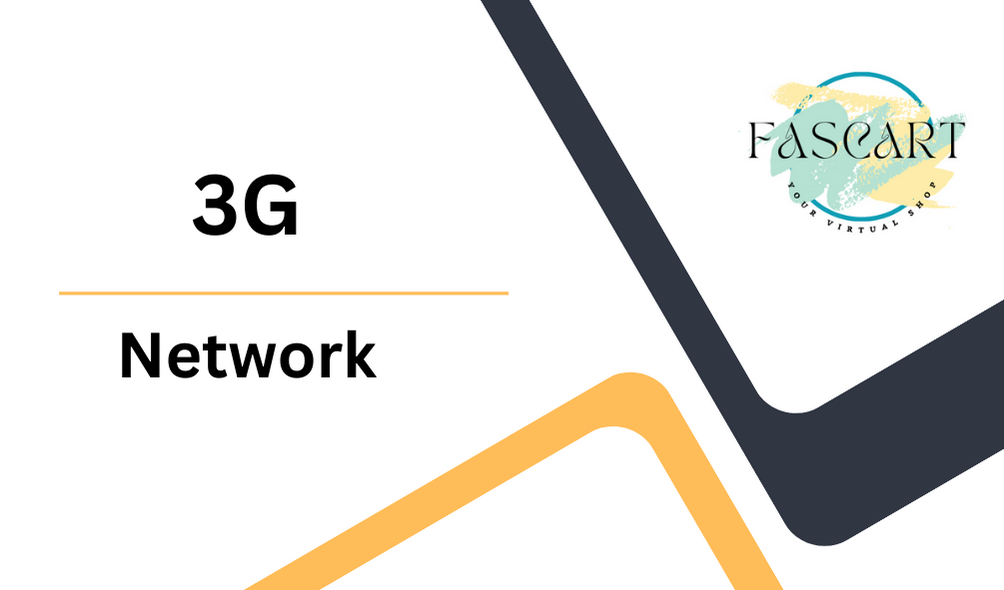The term “3G” stands for third generation, referring to the third generation of mobile tele communications technology. 3G networks were developed to provide faster data transfer rates compared to their predecessor, 2G.
Here are some key features and characteristics of 3G networks-
Data Speeds–
One of the primary advancements of 3G was the significant increase in data transfer speeds compared to 2G. 3G networks were designed to support data rates of at least 200 kilobits per second (Kbps), with some reaching several megabits per second (Mbps). This improvement allowed for better internet browsing, multimedia streaming, and more advanced data services.
Multimedia Support–
3G networks introduced the capability to transmit multimedia content, such as video calls, video streaming, and high-quality audio. This marked a shift from the primarily voice-focused services of earlier generations.
Global Roaming–
3G networks were designed to support global roaming, allowing users to use their mobile devices across different countries and regions seamlessly.
WCDMA and CDMA 2000 Technologies–
There were two major competing technologies for 3G networks: WCDMA (Wideband Code Division Multiple Access) and CDMA2000. WCDMA was more widely adopted globally, while CDMA2000 was primarily used in some regions, notably in the Americas.
Increased Capacity–
3G networks provided improved capacity for handling a larger number of simultaneous users, making them more suitable for the growing demand for mobile data services.
Smartphones and Mobile Internet–
The advent of 3G networks played a crucial role in the popularization of smartphones and mobile internet usage. Users could access the internet, download apps, and enjoy a richer multimedia experience on their mobile devices.
Evolution Path–
3G networks served as a stepping stone for the subsequent development of 4G (fourth generation) networks. Technologies like HSPA (High-Speed Packet Access) and EV-DO (Evolution-Data Optimized) were introduced to enhance data speeds within the 3G framework.
It’s important to note that, similar to 2G networks, 3G networks have also been largely superseded by 4G and 5G technologies in many regions. However, 3G networks might still be operational in some areas, especially in regions where the transition to newer technologies has been slower or where 4G/5G infrastructure is not as widespread.
3G नेटवर्क (3rd Generation Network) एक प्रकार का मोबाइल टेलीकम्यूनिकेशन नेटवर्क है जो तृतीय पीढ़ी की तकनीक का प्रतिनिधित्व करता है। यह तकनीक UMTS (Universal Mobile Telecommunications System) या CDMA2000 के रूप में विकसित की गई है।
3G नेटवर्क के कुछ मुख्य विशेषताएँ शामिल हैं:
उच्च डेटा स्पीड–
3G नेटवर्क उच्च डेटा स्पीड प्रदान करता है, जिससे उपयोगकर्ता वीडियो स्ट्रीमिंग, वेब ब्राउज़िंग, ऑडियो स्ट्रीमिंग, और अन्य डेटा इंटेंसिव गतिविधाओं का आनंद ले सकते हैं।
वीडियो कलिंग–
3G नेटवर्क की एक और विशेषता वीडियो कॉलिंग की सुविधा है, जिससे उपयोगकर्ता एक दूसरे के साथ वीडियो कॉल कर सकते हैं।
मल्टीमीडिया सेवाएं–
3G नेटवर्क ने मल्टीमीडिया सेवाओं को बढ़ावा दिया है, जिसमें वीडियो स्ट्रीमिंग, गेमिंग, और इंटरनेट रेडियो शामिल हैं।
ब्रॉडबैंड इंटरनेट–
3G नेटवर्क से उपयोगकर्ता ब्रॉडबैंड इंटरनेट का आनंद ले सकते हैं, जिससे वे अपने मोबाइल डिवाइस पर विभिन्न इंटरनेट सेवाओं का उपयोग कर सकते हैं।
फ़ास्टर डेटा प्रसार–
3G नेटवर्क में डेटा का त्वरित प्रसार होता है, जिससे वीडियो और ऑडियो स्त्रीलिंग, वेब ब्राउज़िंग, और अन्य ऑनलाइन गतिविधाएं सुचारू रूप से किए जा सकते हैं।
3G नेटवर्क ने मोबाइल टेलीकम्यूनिकेशन में विभिन्न सुधार किए और उपयोगकर्ताओं को बेहतर सेवाएं प्रदान करने में मदद की है।





